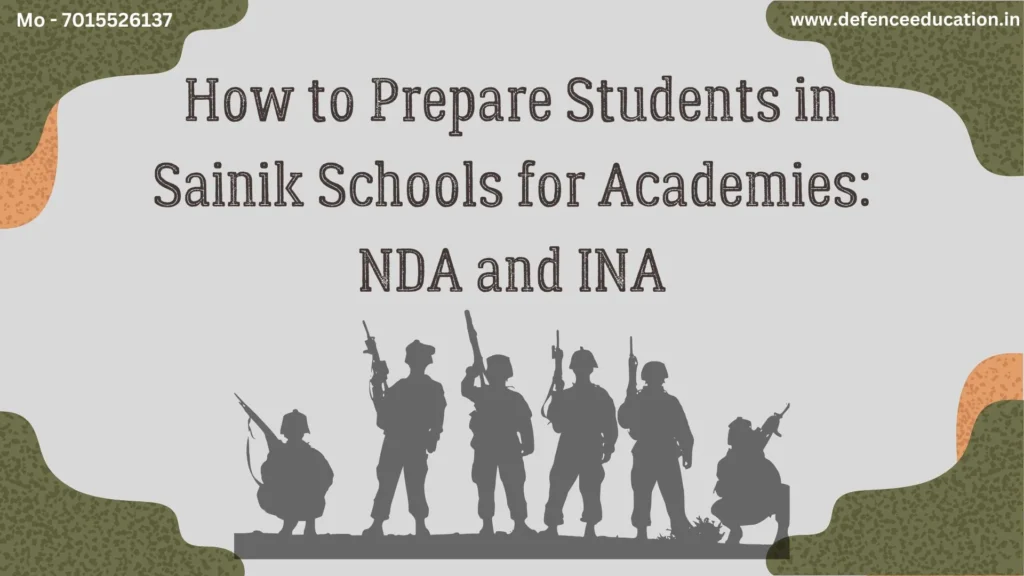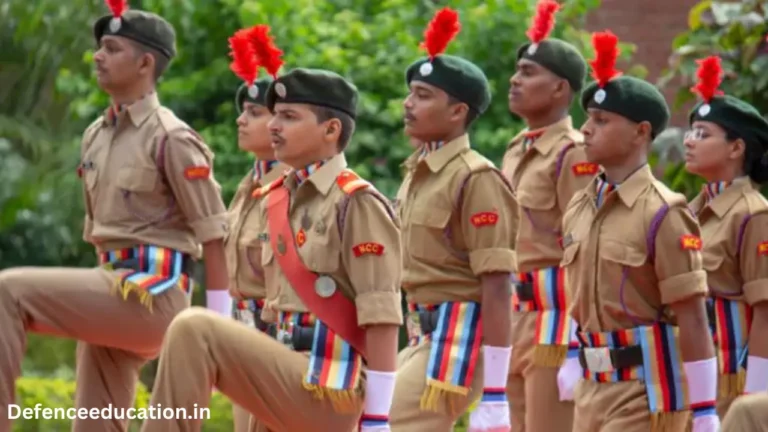A Comprehensive Educational System for Future Defence Leaders
It is a public school system established and managed by the Sainik Schools Society. This society works under the Ministry of Defence India. Sainik schools are established to prepare the students academically, physically and mentally. After studying at Sainik schools, they serve in the Indian Defence Army and Naval Army through the National Defence Academy and India Naval Academy. This school contributes 25% of officer cadets to the INA and NDA. for Join the academy you need clear first test, for that you can take Sainik School Entrance Exam Coaching from defence aducation academy.

Sainik schools come with 1 RIMC and 5 RMS, run by MOD as a joint venture with the respective government. The land, Infrastructure, and employees are provided by the state government and annual funding is provided through MOD.
Moreover, Sainik Schools use the CBSE curriculum by the “CBSE Plus” and also seek to get students ready for admission to NDA and INA. Students of Class VI and Class IX are admitted to Sainik Schools. The reservation policy accommodates SC/ST, state residents, and wards of active and retired military personnel.
History of the Sainik School
The Royal Indian Military College (RIMC) and Royal Indian Military Schools (now known as Rashtriya Military School or RMS), have produced several service chiefs for India, serving as the model for the establishment of the Sainik Schools. Following World War I, the government created 1 RIMC and 5 RMS to Indianize the British Colonial Military in India by offering Western-style education to prepare the future generation of military leaders. The RIMC was founded in 1922. Ajmer Military School in 1930, Bangalore Military School in 1946, Belgaum Military School in 1945, Dholpur Military School in 1962, and Chail Military School in 1922 were the five RMS that were founded. In 1961, the first Sainik School was established.
To combat the growing attrition in the military services, particularly at the officer level, Finance Minister P Chidambaram allotted ₹2 crore to each of the 25 Sainik schools in his 2008 Union Budget. Sainik schools are public schools for regular citizens where worthy pupils receive a top-notch education regardless of their financial situation or social level. Children of SC/ST and active or retired military members got easy seats.
The goal of the Sainik Schools is to train students to be leaders in the Indian defence services as officers. Through the All India Sainik School Entrance Examination (AISSEE), the schools choose the most talented and promising students, and they place a strong emphasis on extracurricular activities which shape their whole personalities. The opportunities offered by Sainik schools enable cadets to advance their abilities in academics, athletics, and other extracurricular pursuits. Football, hockey, and cricket fields, volleyball and basketball courts, boxing rings, firing ranges, running and cross-country tracks, indoor games, parade grounds, canoeing clubs, horseback riding clubs, mountaineering clubs, trekking and hiking clubs, and obstacle courses are among the facilities at Sainik Schools. In addition, Cadets can join the NCC as well and they will get an NCC B certificate after completing their 12th standard.
How many Sainik schools are there in India?
In India, there Are a total of 33 Sainik Schools that prepare the cadets to join the National Defence and Indian Naval Academy.
Who Runs Sainik Schools in India?
Sainik Schools are run by the Sainik School Society(SSS). This society is under the Ministry of Defence India. Hence, in short, Sainik schools are run by MOD. These are English Medium schools associated with CBSE.
Which course is best after Sainik school?
After graduating from Sainik school, candidates have three options, either they join National Defence Academy(NDA), Indian Naval Academy(INA), or Indian Military Academy(IMA).
The purpose of all the academies is to prepare the candidates to serve the nation through the Armed forces.

